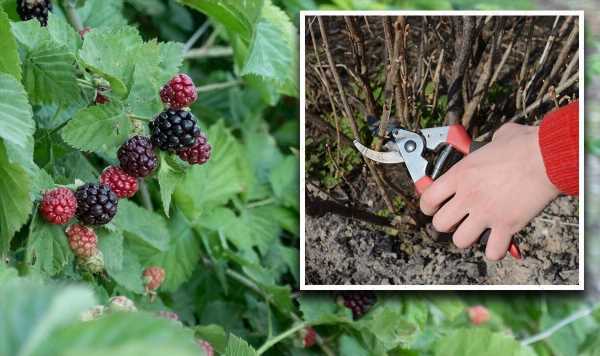Monty Don shares tips for pruning fruit trees
We use your sign-up to provide content in ways you’ve consented to and to improve our understanding of you. This may include adverts from us and 3rd parties based on our understanding. You can unsubscribe at any time. More info
Brambles can become problematic when they take over neglected and overgrown gardens. The thorny vines are able to grow almost anywhere, covering shrubs, hedges and even the cracks between concrete and brickwork – but how can you get rid of it? These are the three key steps you should take to kill, clear and prevent brambles from taking over your garden.
Bramble shoots are notoriously fast-growing and are able to spread rapidly to create a dense cluster of thorny stems.
This common plant can spread across gardens too, so even if you don’t have a blackberry bush in your own garden, you are likely to find it creeping over from neighbours that do.
Getting rid of unwanted brambles is crucial to help beds and borders of cultivated plants thrive, and it is easier than you might think.


How to kill brambles
The thick, thorny growth can spread widely in your garden and root at the tips, making it tough to tackle in one clean sweep.
While a systemic weed killer can be used to kill large amounts of brambles quickly, simple ingredients such as salt can be used to tackle smaller areas.
Spray a salt water solution
Removing brambles with salt takes a little more time than a chemical weed-killer, but it is equally as effective.
All you need is table salt, water and an empty spray bottle.

Mix two parts salt with one part water until the solution fills the spray bottle.
Lightly spray the liquid onto the leaves, stems and roots of the unwanted brambles.
Take care to avoid spraying nearby plants as this could lead to issues with their growth.
Repeat this every day for 10 days, by which time the brambles should be ready to clear from your garden.
DON’T MISS:
Bulb aftercare: Five tips to ensure your bulbs reflower next year [INSIGHT]
Peace lily: How to care for ‘difficult’ houseplant [ANALYSIS]
Gardening jobs: ‘Prevent weed growth’ and sow summer-flowering bulbs [REVEAL]

Cut back treated brambles
Once the thorny growth has been treated with salt water, it’s time to cut back the bush to physically clear away the excess.
You should cut back the plant to about six inches high to make it easier to access the roots.
A strimmer will save you time while doing this, but you can also use secateurs, shears or loppers.
Use a sharp saw to cut away thick stems and correctly dispose of the overgrowth by cutting it down into small pieces, and throwing it into a bin bag to rot down.
Any growth which is left in your garden will simply re-root and continue to spread.
Dig out the stump and roots
If you have brambles growing through shrubs or perennials, the best option is to dig out the bramble root.
This could mean lifting your garden plants to get at, and dig out the bramble roots, then replanting the plants.
It is crucial to remove the entire root system to kill, clear and also prevent brambles from becoming an issue again in the future.
Brambles will regenerate from well below soil level, so you will need to take your time to make sure the roots are properly removed.
Keep an eye out for young seedlings as soon as they appear if you notice any fresh growth appearing in your garden.
Source: Read Full Article
